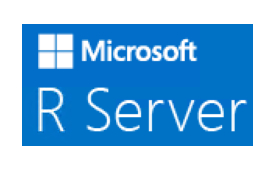R is a programming language designed to solve statistical problems and Artificial Intelligence, with a remarkable capacity for graphic representation. It is open source, having a global community of users that nourish it with content.
Microsoft quickly understood all these advantages, and has incorporated it into its range of analytical solutions, especially enriching the dimension concerning business deployments, among other factors.
The Microsoft R family of products covers R Server (MRS), R Client (MRC) and R Open (MRO), all built on open source, and ordered from higher to lower features.
MRS adds capabilities to the traditional open source R, such as remote execution, deployment of web services, integration with Machine Learning, and scalable solutions or with simultaneous processing in parallel.
At a very basic level, we can affirm that MRO is Microsoft’s open source stable version to make use of all the packages published by the community, and that MRC is an improvement of the previous one, with the capacity to use additional packages (MicrosoftML, olapR , and RevoScaleR), with data processing limitations adjusted to local memory, and up to two threads. To benefit from the scalability of discs, features and speed, it is necessary to make use of the computing context offered by MRS.
Microsoft R Server is oriented to business use, and offers an R distribution with process capability at the levels of big data and DWH.
MRC (R Client), as commented before, operates in a local machine scenario. However, MRS (R Server) is a commercial software that can be run on a set of platforms, on a larger scale and workload, and on client / server topologies that support remote access over secure connections.
The idea is to develop over MRC, and migrate to MRS when the needs of a system in production are needed.
Although the ScaleR technology (through the use of the RevoScaleR package) is available in MRC, in this case, the data must conform to the memory available in the local system, and, at most, two processors can be used. Only MRS has the ability to take full advantage of ScaleR, making use of the capabilities of remote computing, parallel processing and distributed workloads.
The analysis functions offered by ScaleR include, apart from statistical summaries, linear models, logistic regressions, kmeans groupings, trees and decision forests. All are processed in parallel and distributed automatically.
The MRS production step tools can deploy the analysis in a web environment, on a PC, mobile device, or on dashboard generation applications and backend systems. In short, it converts an R script into an analytic web service.
The deployments can be done in a single machine, or in a server cluster with load balancing.
In the Windows environment, calculation clusters can be used in Active-Active mode, and web nodes can be scaled using Network Load Balancing.
In order to become aware of the power of this technology, we will mention some of the platforms available for R Server:
Hadoop: to distribute the work between different nodes
Teradata DB: perfect integration for data analysis in Teradata
Linux: to be deployed in Linux environments
Windows
SQL Server R Services: advanced analytics in SQL Server
Information Source – https://myclouddoor.com/what-is-r-server/
